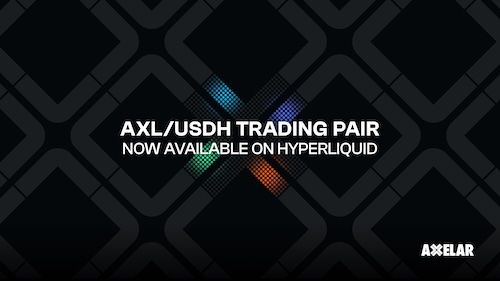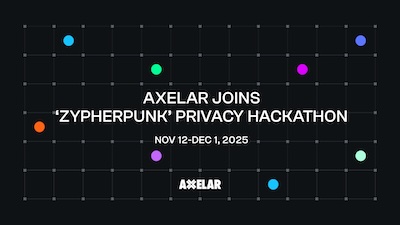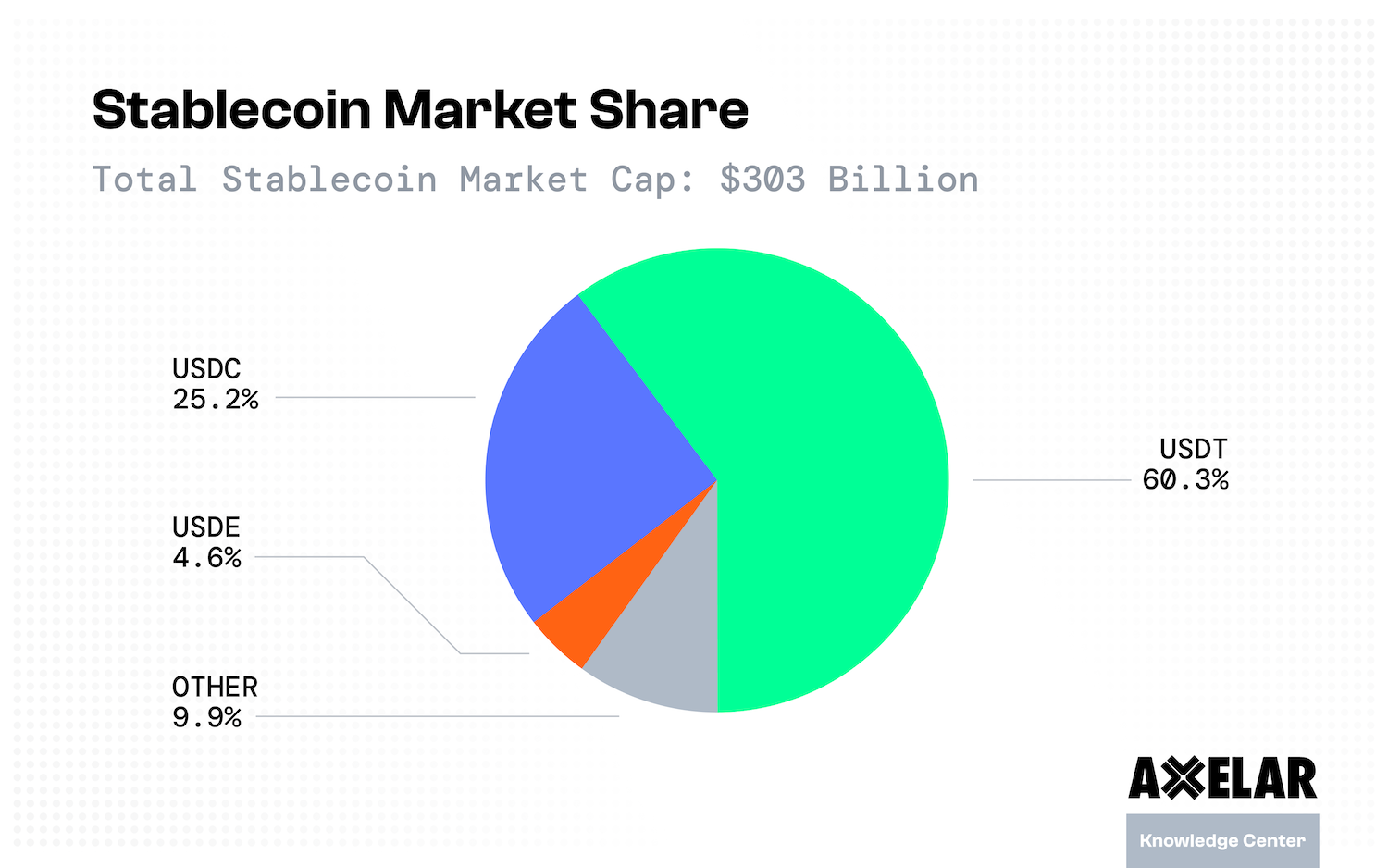What are Cross-Chain Bridges? Benefits and Risks
Table of Contents


The current Web3 ecosystem is ever-expanding, especially with the availability of new blockchains, each with its own utility. While adoption is perpetually increasing, the challenges of blockchain interoperability and scalability remain. With a scattered ecosystem full of blockchains taking a siloed approach, the need for networks to communicate becomes imperative. In the need of the moment, we have witnessed the rise of one of the biggest blockchain interoperability solutions — cross-chain bridges.
As the name suggests, a cross-chain bridge acts as a "bridge" between two blockchains, for example, bridging users from Ethereum to Base. Utilizing smart contracts to enable the transfer of tokens from one blockchain to another. But, is it the optimal solution for cross-chain interoperability?
What is a cross-chain bridge?
Cross-chain bridges are software-based interoperability solutions that are designed to enable seamless interactivity between blockchains. Simply put, they employ smart contracts to enable the transfers of assets and data between different blockchain networks that would otherwise operate in isolation. These bridges enhance the utility available in the Web3 ecosystem, enabling both users and developers to leverage the strengths of various networks, resulting in a more interconnected and robust ecosystem.
Benefits of cross-chain bridges
Since blockchains work in silos instead of together, interconnectivity is limited. Each chain works on its own set of rules, consensus mechanisms and governance structures, making communication nearly impossible. This is why cross-chain bridges offer unparalleled benefits in promoting connectivity between blockchains, enabling both users and builders to make the most of the expanding Web3 ecosystem.
In Web3, just about every blockchain network to come after Bitcoin and Ethereum has their own decentralized cross-chain bridge to enable users to move funds onto their platform: there’s an Avalanche cross-chain bridge (AVAX), an Arbitrum cross-chain bridge (ARB), a Polygon cross-chain bridge (MATIC), a Base bridge, a Cosmos bridge, etc. Chances are, if a network is available to the public, you can bridge assets to it.
Here are some of the top benefits of cross-chain bridges
- Blockchain interoperability: Cross-chain bridges allow assets issued on one blockchain to be used in applications on another. As a result, developers and users are not limited to a single blockchain's capabilities and can leverage the strengths of various networks. This flexibility and interoperability encourages innovation and widens the range of possibilities for applications in the ecosystem.
- Improved liquidity: Cross-chain bridges enhance liquidity in the blockchain ecosystem. With the ability to move assets across chains, more trading pairs become available and assets on newer chains can tap into the liquidity of established chains. This cross-chain liquidity fosters a more unified, dynamic and efficient market.
- Optimized scalability: Another significant benefit of cross-chain bridges is the improvement in scalability. As the Web3 ecosystem continues to grow, single chains often face limitations such as congestion, slow transaction speeds, and high fees. New chains emerge with faster throughput technology or less crowding. Cross-chain bridges allow applications to build on faster chains, helping to distribute load and improve performance everywhere. Layer 2 solutions such as Optimistic Rollups and ZK Rollups, which also employ cross-chain bridges, specifically aim to address the scalability issue.
- Expanded use cases: Cross-chain bridges facilitate new use cases and functionalities by allowing interactions between smart contracts on different blockchains. For example, a DeFi protocol on the Polygon blockchain could use a stablecoin minted on the Ethereum blockchain. This interconnectivity allows for unique combinations of features from different blockchains, paving the way for creative blockchain applications.
How does a cross-chain bridge work?
In general, cross-chain bridges utilize the wrapping model to move tokens across blockchains. To understand how a cross-chain bridge works, let us suppose Bob holds Token X on the Ethereum chain and wishes to use it on Polygon. However, it is impossible to use the token directly on Polygon, which is why Bob heads to a cross-chain bridge to ‘bridge’ his tokens across. Here’s how the traditional cross-chain bridge process works:
- Bob connects to a cross-chain bridge that serves both networks.
- Bob deposits the amount of Token X that they want to bring over to Polygon (destination chain).
- The bridge receives, verifies and locks the deposit on Ethereum (source chain).
- The bridge mints a corresponding number of wrapped tokens on Polygon.
- Bob receives the wrapped tokens that can be used in the Polygon ecosystem.
- If Bob wishes to receive his X tokens back on their native chain (Ethereum), he can simply deposit the wrapped tokens back intto the bridge on Polygon and receive the corresponding amount of native Token X
This diagram shows how a cross-chain bridge works. In the example here, the bridge uses a multisig contract to verify deposits on the source chain. The multisig requires a threshold number of signatures (say, three out of five) from multiple signers authorized to verify transactions.

This flow is basically how all conventional cross-chain bridges, including Axelar’s Satellite bridge, enable users to transfer their tokens across blockchains. However, instead of a multisig, Axelar security is based on proof-of-stake consensus.
This means Satellite, like any bridge or cross-chain application that integrates Axelar, verifies transactions using a dynamic validator set: anyone can accumulate stake and join the active validator set to verify cross-chain transactions; bad actors have their stake slashed. At present, Axelar has an active set of 75 validators.
Taking a step further than just bridging assets across, Axelar General Message Passing (GMP) makes interoperability easier and more accessible across chains. GMP enables developers to build on any Axelar-supported chain and call a function on any other connected chain to utilize the best features of multiple chains, thereby opening up endless possibilities. More on GMP below.
Limitations and risks of cross-chain bridges
While cross-chain bridges bring forth multiple benefits, there are inherent limitations and risks that users need to be aware of. Here are some of the biggest limitations of cross-chain bridges:
- Security faults: Most bridges are trusted setups, such as a multisig in which a handful of parties are designated to approve transactions and prevent fraud. The case of the $600 million Ronin bridge hack, back in March, illustrates how this kind of setup can present risks in cross-chain bridges. On Ronin, five out of the nine validators used to approve transactions were hijacked after their private keys were stolen. This gave hackers the ability to validate transactions without oversight.
- Scalability issues: As more blockchains emerge, pairwise bridges can struggle to keep up. The number of required connections is manageable at 10s of chains. But with hundreds, or even thousands, of blockchains envisioned in modular or dappchain approaches, pairwise bridges aren't adequate.
- User experience: Most bridges will require developers to send their users to a third-party: if you're building a dApp on Network B, and want to welcome users from Network A, you can do it using a bridge – but it involves sending your users through an awkward user experience that is outside your control.
- Security concerns: Cross-chain bridges introduce a new point of vulnerability. If a bridge's security is compromised, hackers can exploit it, leading to significant asset theft. Since June 2016, around $2.5 billion has been stolen in bridge hacks, most prominently the Ronin bridge hack that amounted to losses worth more than $600 million at the time (Source: Coindesk).
- Limited liquidity: Once you’ve bridged an asset to a new network, does liquidity exist for the functions, (borrowing, lending, swapping, etc.) you want to perform? DeFi providers need to onboard your wrapped token and support it, before you can use it.
Given the billions of dollars transferred via cross-chain bridges in 2022, it’s hardly a surprise that in 2022, Chainalysis noted that 69% of all funds stolen from DeFi have been from malicious parties exploiting bugs in security and hacking cross-chain bridges. Vitalik Buterin, co-founder of Ethereum, noted the risk inherent in cross-chain bridges back in January of 2022, saying, “you can't just pick and choose a separate data layer and security layer. Your data layer must be your security layer.”
Going beyond bridges with Axelar
Cross-chain bridges, even though extremely popular, are unscalable, sometimes risky and often difficult to use. As the ecosystem grows, the increasing number of blockchains, assets, platforms, use cases and users are only going to add to the complexities. It is safe to say that bridges alone are not the interoperability solution of the future.
However, combined with Axelar General Message Passing (GMP), bridges can enable applications and users to achieve seamless interoperability with utmost security. Developers can build on any Axelar-supported chain and call a function (both smart contracts at the application layer and functions built at the protocol layer) on any other connected chain to utilize the best features of multiple chains.
That means tokens can be bridged to another chain, along with instructions – for example to swap those tokens on a DEX on the destination chain, as in a cross-chain swap. In some cases, tokens can be left on their source chain, while logic on another chain passes messages with instructions for where to move them, as the Junkyard NFT game does, or for a loan to be issued, as Prime Protocol does. (Read the relevant case studies on Junkyard and Prime.)
GMP is extremely secure and relies on a permissionless validator set ( proof-of-stake). Here’s how Axelar GMP enables developers to seamlessly implement cross-chain transfers:
- dApp developer implements the Axelar executable interface in the destination contract;
- A call function (or a call function + tokens) from the source chain is initiated;
- The call enters the Axelar Gateway from the source chain;
- Axelar network confirms the call, subtracts the usage fee (in native source chain tokens), and prepares an outgoing transaction on the destination chain;
- The call is approved and emerges from the Axelar Gateway on the destination chain;
- The call function executes as if it had been made on the source chain and results accordingly.

Hundreds of applications are already utilizing GMP, making interoperability easier. A prime example is Squid, a liquidity routing protocol built on Axelar. Squid allows any token to be swapped between blockchains in just a single click. Therefore, users can utilize their assets across DeFi, gaming, NFT and other platforms without worrying about the chain their assets are on.
The possibilities with GMP are endless as it powers hundreds of applications to achieve seamless cross-chain transfers across supported chains. With the recent integration of Cosmos, Axelar GMP connects 45 blockchains at this writing, including Avalanche, Base, Binance, Ethereum, Fantom, Linea, Moonbeam and Polygon.
Interested in using GMP and building with Axelar? Check out our docs on General Message Passing to know more, and reach out to us on Axelar Discord for any questions.


